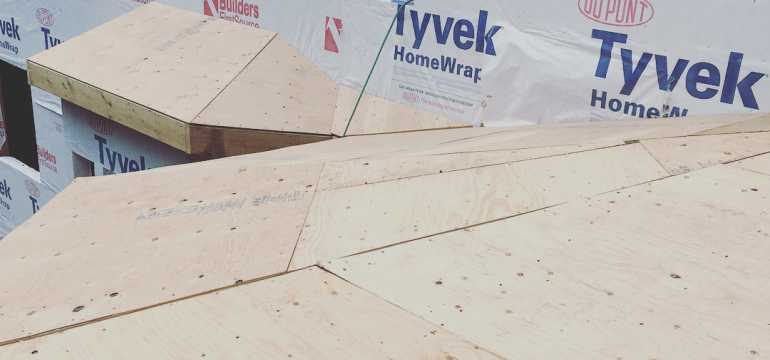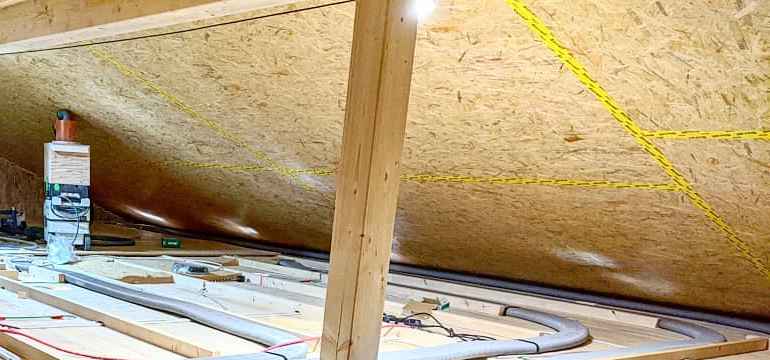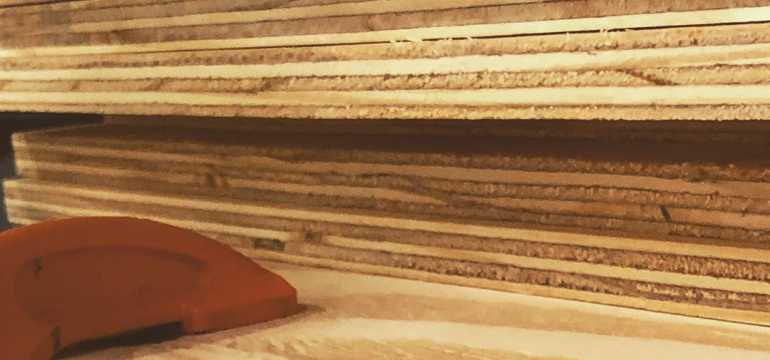The roof is perhaps the most important part of your entire home. The roof of your house covers and protects everything inside of those walls from the rain, snow, and sleet that come your way. You want to make sure that you are building a quality roof that will last you for decades to come, but you need the right kind of plywood for the roof. If it comes down to OSB or plywood for the roof, which one should you choose?
Understanding the different types of plywood for the roof, the thicknesses, and the common sizes can help you to make wiser decisions for your home. If you need a crash course in selecting the right plywood, this guide should make things a little easier.
What Kind of Plywood for the Roof?
 When it comes to choosing what kind of plywood you need for the roof, it is important to understand the basic categories that you can choose from. Most construction sites will consider the use of either OSB or plywood for the roof.
When it comes to choosing what kind of plywood you need for the roof, it is important to understand the basic categories that you can choose from. Most construction sites will consider the use of either OSB or plywood for the roof.
CDX plywood is a construction-grade type of plywood that is designed for exposure to the elements. It can withstand moisture for a brief period of time but may become warped and delaminated with consistent exposure to the elements. This particular type of plywood is crafted from layers of wood stacked on top of one another with alternating grain patterns in each layer. The alternating grain gives the plywood a system of checks and balances that allow it to expand and contract evenly across the sheet.
Here is another option for plywood you might think about: RTD Plywood: Everything You Need to Know
 Alternatively, OSB is created from wood chips, resin, and adhesive that is baked and formed into the shape of a sheet of plywood. It is extremely resistant to moisture. However, when it is penetrated by water, it takes a very long time to finally dry out compared to CDX plywood. The edges may also swell during this time, creating small yet visible ridges on the roof where the boards meet.
Alternatively, OSB is created from wood chips, resin, and adhesive that is baked and formed into the shape of a sheet of plywood. It is extremely resistant to moisture. However, when it is penetrated by water, it takes a very long time to finally dry out compared to CDX plywood. The edges may also swell during this time, creating small yet visible ridges on the roof where the boards meet.
Both CDX plywood and OSB have advantages and disadvantages when it comes to plywood for roofing. At the end of the day, what kind of plywood should you use for your roof? Contractors often prefer to use OSB because of the significant cost savings that it can bring. In some areas, it is less than half the price of traditional plywood.
Plywood Thickness for the Roof
 One of the most important factors when selecting the plywood for your roof is how thick each piece should be. Like most other things, there is no one right answer for the plywood thickness of your roof. The answer depends mostly on how far apart the rafters are and the roof loads, which vary based on the pitch of your roof.
One of the most important factors when selecting the plywood for your roof is how thick each piece should be. Like most other things, there is no one right answer for the plywood thickness of your roof. The answer depends mostly on how far apart the rafters are and the roof loads, which vary based on the pitch of your roof.
The most common scenario is a home that has rafters set approximately 16 inches apart. In this case, plywood should be a minimum of 3/8 inch thick. However, you may need to consider bolstering the plywood thickness for a roof that has a higher load. A roof that lays practically flat will have a much heavier load than a steeper roof that allows rain, snow, and ice to roll right off.
Rafters that are slightly farther apart might require ½ inch or 5/8-inch-thick plywood. Many homes have rafters that are even wider at 24 inches apart and will require a thicker sheet of plywood. When this is the case, experts recommend a 5/8-inch-thick sheet. Keep in mind that the load of the roof still plays a role in the plywood thickness. A flatter roof with rafters farther apart may need a thickness of up to ¾ inch.
What Size Plywood for the Roof?
Another issue that many people encounter is what size plywood the roof may need. Fortunately, this is one issue that has primarily been standardized by the industry. Both CDX plywood and OSB tend to come in standard sheets of four-foot by eight-foot (4×8).
However, you might find that OSB can better suit your needs than plywood for the roof. Because of its construction, some manufacturers actually make larger sheets of OSB. They can range from the standard 4’ x 8’ piece to a 4’ x 9’ or even a 4’ x 10’. Much larger panels that measure up to 8’ x 24’ could also be available from specialty retailers. Given that the edges may swell with exposure to moisture, you may prefer to use these larger panels to minimize the number of edges along the roof.
Choosing Plywood for the Roof
Choosing the right type of plywood for the roof is one of the most important construction decisions that you will have to make. It determines how long your roof will last and how well it will protect the contents of your home. Both OSB and plywood for the roof have been approved for use, so it may come down to what you feel most comfortable using. Be sure to weigh the advantages and disadvantages of each option before you decide which way to go for your new home or your updated roof.
- How to Cut Lexan - September 25, 2020
- Mineral Spirits vs. Mineral Oil - September 25, 2020
- Shellac vs. Polyurethane - September 24, 2020
